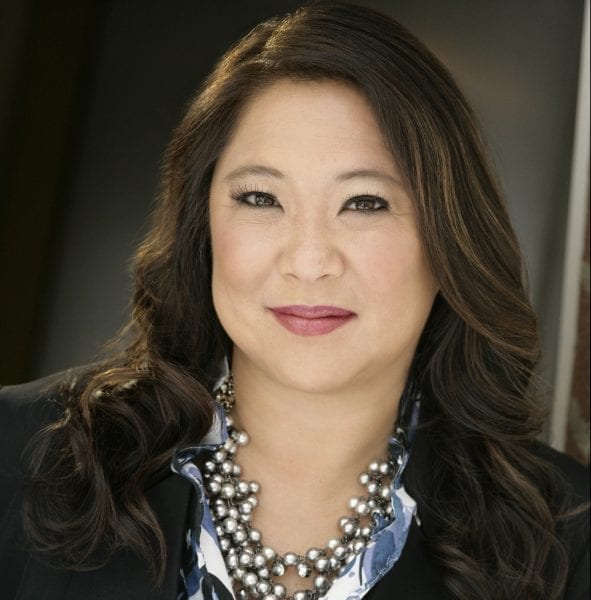Think about your last birthday. As you blew the candles out on your cake, what crossed your mind? For some, milestones like these bring about a time of reflection; an opportunity to look back on the years and the triumphs, set-backs and lessons learned from it all. It’s also a time for looking ahead, identifying goals, and mapping out a way to achieve them.
As we celebrate Lenovo’s 35th anniversary, we’re curious of what’s in store for the future, not only for the innovations to come, but also how companies like Lenovo, and the people who drive it, will continue to evolve.
We asked some experts in the field to weigh in on the future of the workplace and explain how technology will play a leading role in creating a more inclusive environment.

Deborah Munster, executive director at Diversity Best Practices, points to some startling statistics about the general workforce of the future; In the next decade, experts predict a talent shortfall of nearly 23 million people.
“The reasons for this are twofold,” Munster reports. “One being retirement, as an average of 10,000 people turn 65 every day. The other being the gig or “open-talent” economy, where, because of technology, workers feel more empowered to freelance rather than accept full-time jobs.”
Forecasts show that, in the next few years, more than half of U.S. workers will be non full-time employees, compared with 30 percent now, pointing to a dearth of talent to fill in the future.
“If you have folks that are looking to retire or work part time, is there a way to leverage their knowledge to have them coach employees in their skill sets?” Munster wonders. “The idea is to use your more seasoned people in a very productive way that serves the business needs.”
For the tech industry specifically, Munster points to evidence that 60 percent of new jobs in technology are being held by 20 percent of the current workforce, leading to a shortage of 1.5 million people. Munster is hopeful that internal initiatives for companies, such as Employee Resource Groups and talent managers, will find ways to proactively begin upskilling their workforces by getting training for employees who might have previously been overlooked.
“You’ve got a base of diverse people – if you begin to take them through the new technology, they could potentially become a great asset to you to fill that shortfall,” Munster said.
You’ve got a base of diverse people – if you begin to take them through the new technology, they could potentially become a great asset to you to fill that shortfall.

Aside from attracting talent to fill the roles, companies will have to continue finding ways to integrate their workforce and foster inclusivity across gender, racial, and ethnic lines. Author and diversity and inclusion (D&I) workplace consultant Lily Zheng prioritizes the impending issues that companies must address:
“The future is going to be messy and complex,” Zheng says. “It will require our hiring managers and human resources in general to be much more flexible, agile, and knowledgeable about issues of D&I than they are currently.
Tech has the most promise in its ability to provide the sort of birds-eye view of what’s happening within an organization and identify areas where things aren’t going well, areas where there is perhaps unproductive conflict. We’re getting better and better ways to analyze qualitative and quantitative feedback.”
In recent years, we’ve seen artificial intelligence (AI) become a major player in the arsenal of recruiting tools for talent acquisition teams. Both Munster and Zheng agree that it’s a trend we’ll continue to see, and one that deserves careful attention in its development.
It’s important to recognize how the inherent bias built into these AI programs can help, or hurt, the hiring process. A recent Brookings Institute article cites bias in applications in hiring, among others, as the basis for challenging developers to clean up these systems in favor of more inclusive ones.
AI can be used in the hiring process by helping a company determine the starting salary for a new hire through data inputs like salary history. However, algorithms that do not account for the history of cultural bias in compensation could create unintentional gender bias in the salary structure.
AI algorithms trained in part using data in one context can later be migrated to a different context with different rules about the types of attributes that can be considered, according to the Brookings piece. In the highly complex AI systems of the future, we may not even know when these migrations occur, making it difficult to know when algorithms may have crossed legal or ethical lines.
Munster says that large tech companies like Lenovo should be looking to tap into their diverse talent to build, test, consult, and contribute to the knowledge base that goes into programming these algorithms.
Tapping into the diverse talent of the company is a direction Lenovo leaders will continue to press further into.

“I hope that in 10 years we’re not still having this same conversation that having a diverse workforce is important – not only because it’s the right thing to do, but because companies finally understand that businesses thrive when your teams bring unique backgrounds, experiences, and insights to the table,” says Yolanda Conyers, chief diversity officer for Lenovo.
“We will continue to drive and focus on inclusivity through internal initiatives – like talent acquisition programs that hold teams accountable for diverse candidate slates for open roles, or career development programs to ensure that traditionally under-represented employees are being invested in for leadership roles to ensure that there’s representation across the top levels within a company.”
Conyers says successfully achieving a fully inclusive workplace will require an organization-wide effort.
“Companies must begin breaking away from the concept that diversity and inclusion sits with one team, or one leader, within a company,” Conyers states.
“While a leading officer like myself, or a central diversity office, is certainly beneficial for leading the strategies and spearheading important initiatives, it falls on everyone in an organization to adopt the practices, enforce the culture, and take ownership of driving diversity and inclusion to the forefront into the future.”
